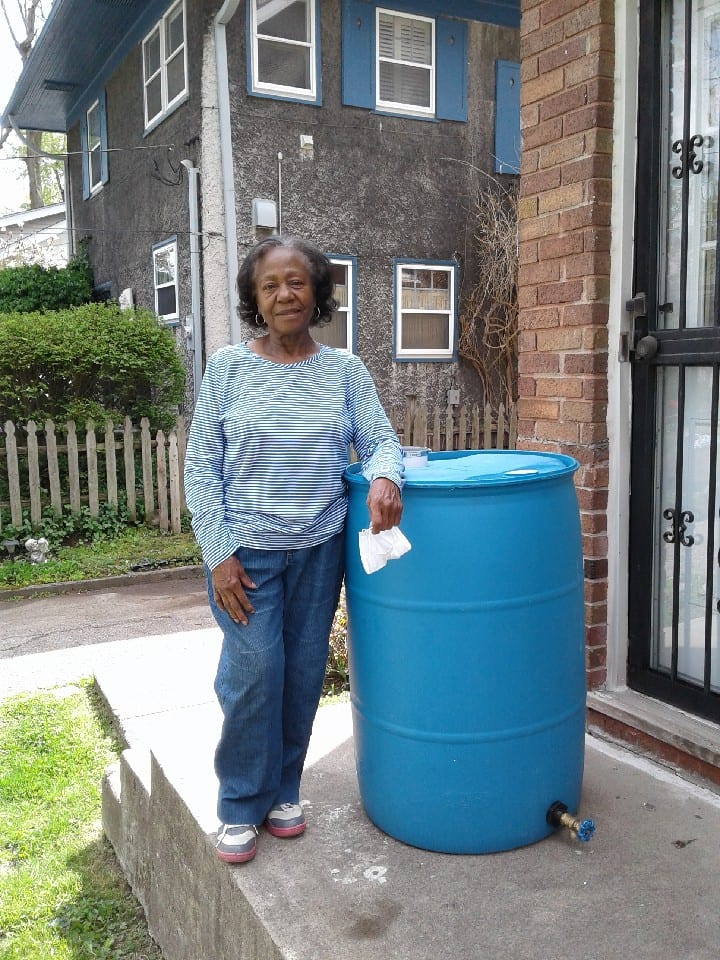While all that rain we received in June and July were great for our gardens and green lawns, all that rain also meant more mowing and weeding and more flooding on your property, in the streets, or maybe even in your basement.
But did you know there are ways that you can manage that stormwater that helps reduce flooding while improving the quality of water and waterways — the same waterways which supply your drinking water?
Here are a few ideas for managing your lawn, gardens, property, and nearby spaces in ways that are more environmentally sustainable, reduce flooding and require less water use and maintenance:
- Clean your storm drains. Storm drains get clogged with litter and debris and the stormwater has nowhere to go. Adopt A Storm Drain near your home to help the rain find a path to the waterway.
- Avoid or reduce the use of lawn chemicals that can wash off into our waterways untreated, harm wildlife and degrade water quality. Never apply chemicals when rain is imminent as it not only wastes your lawn care costs, but it also creates water pollution. Take the Clear Choices Clean Water pledge to reduce lawn chemical use.
- Install a Rain Barrel to capture rainwater for later use. Rain Barrels attached to your downspout can collect rainwater from your gutters to slow and reduce the amount of water in your yard, and you can use it later for watering plants and gardens. Check out Kheprw Institute’s Express Yourself Rain Barrel Program, or keep, and eye out for a Rain Barrel Building Workshops organized by ROW with Marion County Soil & Water Conservation District.
- Plant a Rain Garden. Rain gardens can be created in a low spot in your yard which can be planted with deep-rooted, drought-resistant plants that beautify your space while filtering pollutants and allows the rainwater to slowly be absorbed into the ground instead of running off. Learn more about the benefits of rain gardens and how to build your own rain garden, and be on the lookout this fall for a rain garden workshop organized by ROW and Marion County Soil & Water Conservation District.
- Plant more native trees. Trees are not only good for absorbing and filtering storm water, but they also add to cleaner air quality. Keep Indianapolis Beautiful’s Community Forestry Program offers 20-plus trees to groups and neighborhoods wanting to help Indy meet its goal of 100,000 new trees.
- Pick up litter. Whether it’s fast-food containers, drink bottles or cigarette butts, litter in your streets, sidewalks and neighborhoods is not just unsightly, it’s harmful to our waterways. Check out the new anti-litter campaign, A Little Love Stops Litter, launched by the City of Indianapolis with Keep Indianapolis Beautiful, and pledge to beautify and clean up your community.

We might be hoping for some sunny days and rainbows in the coming months, but now you know ways to reduce standing water, improve water quality and improve quality of life and beautification in your yard and neighborhood.
Reconnecting to Our Waterways (ROW) works with many community partners to help lift up waterway neighborhoods across Indianapolis. Get involved with any of the groups noted above or join a community-led volunteer waterway effort along our six waterways — Central Canal, Fall Creek, Little Eagle Creek, Pleasant Run, Pogue’s Run or White River — at www.ourwaterways.org or info@ourwaterways.org.
Julie L Rhodes is collective impact director of Reconnecting to Our Waterways (ROW).









